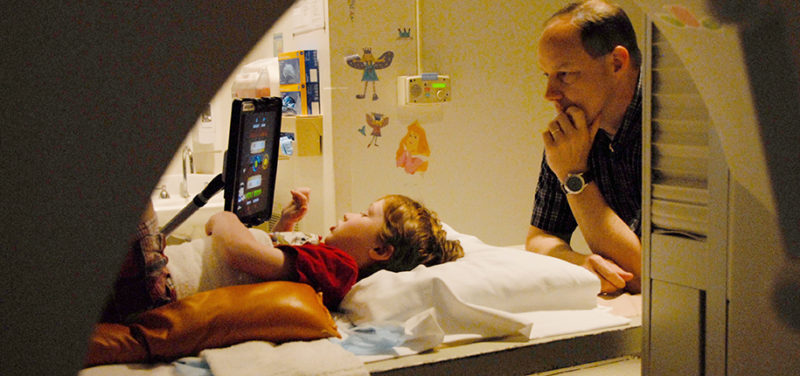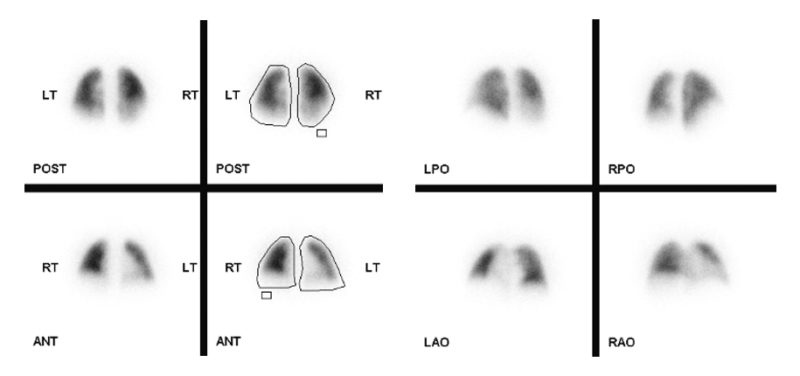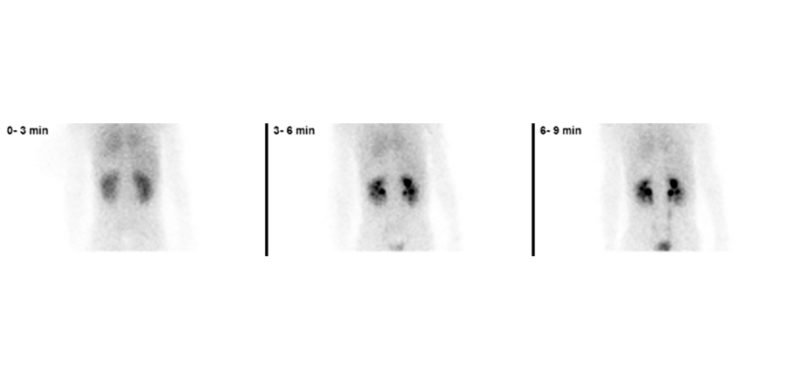
When you and your family visit nuclear medicine in the Radiology Department, the test your child is receiving determines the length of time you will be here. We have a large variety of testing we perform everyday and can image almost anything from the brain to the bones and everything in between.
 Image: Lung Perfusion Scan
Image: Lung Perfusion Scan
One of the shortest tests we offer is called a lung quant or lung perfusion scan. There are a variety of reasons your child’s physician would order this test, but a large population of patients we do this test on are children with various cardiac conditions. The information this test provides is how well the blood is flowing to both lungs. We inject a radioactive medicine into a vein with a butterfly needle and immediately begin imaging. We take three images that are three minutes each. That’s it! We have all the important information we need in only nine minutes of imaging. We can complete this test without having to give your child any sedation medicine, regardless of their age.
 Image: Glomerular filtration rate or GFR
Image: Glomerular filtration rate or GFR
One of the longest tests we offer is called a glomerular filtration rate, or a GFR. The information this test provides is how well the kidneys are functioning. It can be ordered two ways: with pictures or without pictures. This is another test that does not require sedation, regardless of age or even if we take pictures. To determine kidney function, we do this test in two parts. In the first part we inject a radioactive medicine into a vein through a butterfly needle. If pictures are ordered, we immediately take a nine-minute image. Then you and your child will have a 90-minute break during which your child can eat and drink anything except for caffeine. When you come back for the second part of the test, we start a series of blood samples. We draw one sample every 30 minutes until we have four total samples. This part takes about 90 minutes to two hours. If pictures are ordered, we take a three-minute image with the first blood sample and are finished imaging for the duration of the test. This lengthy exam offers very accurate and reliable information regarding your child’s kidney function.
No matter which test you are visiting our department for, or how long you will be here, we strive to provide the best imaging and patient experience we can. We look forward to caring for you and your family!